Once you understand how each type of salt works in different cooking applications, the undiminished power of gourmet salt will be yours. Throw away your table salt! Save your kosher salt for de-icing the sidewalk! Pour your cheap sea salt (which is often refined) into the bath tub! Start using finishing salts for every food you eat. Once you start, you'll never go back.
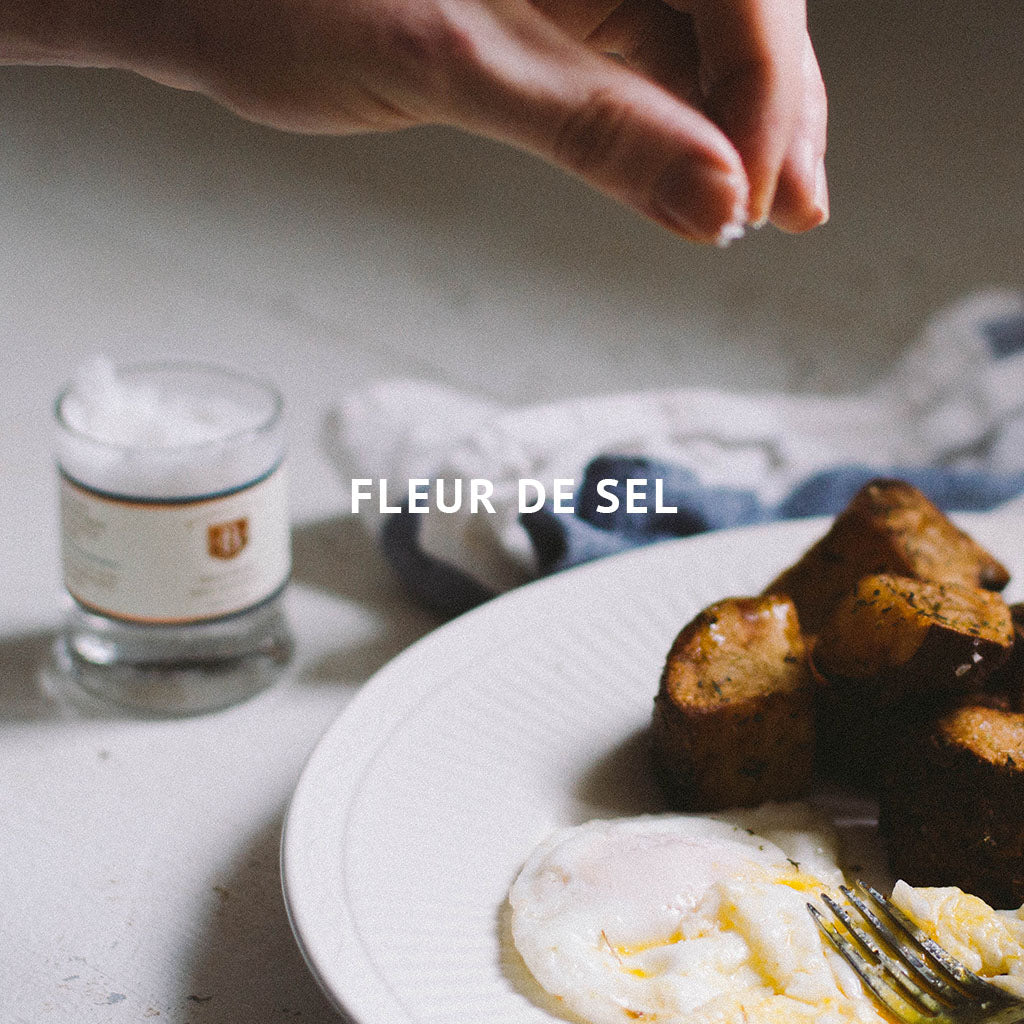
Fleur de Sel
About: Fleur de sel literally means "Flower of Salt" in French, and many classic fleur de sels are produced in regions of France - Guérande, Camargue, Noirmoutier, and I'ile de Ré. But the label 'fleur de sel' describes the way the salt is made and the qualtiies it possesses. Fleur de sel is a solar evaporated sea, lake, or spring salt with fine, irregular, moist, mineral-rich crystals made by raking the crystals that blossom on the surface of a crystallizing pan. Today, fine fleur de sel is made in countries around the world.
Impact: Commingles gently with food, adding a mild, delicate crunch.
Uses: Finishing salt for subtle foods. Cooking salt for specialty dishes. The best all-around finishing salt out there.
Shop fleur de sel >
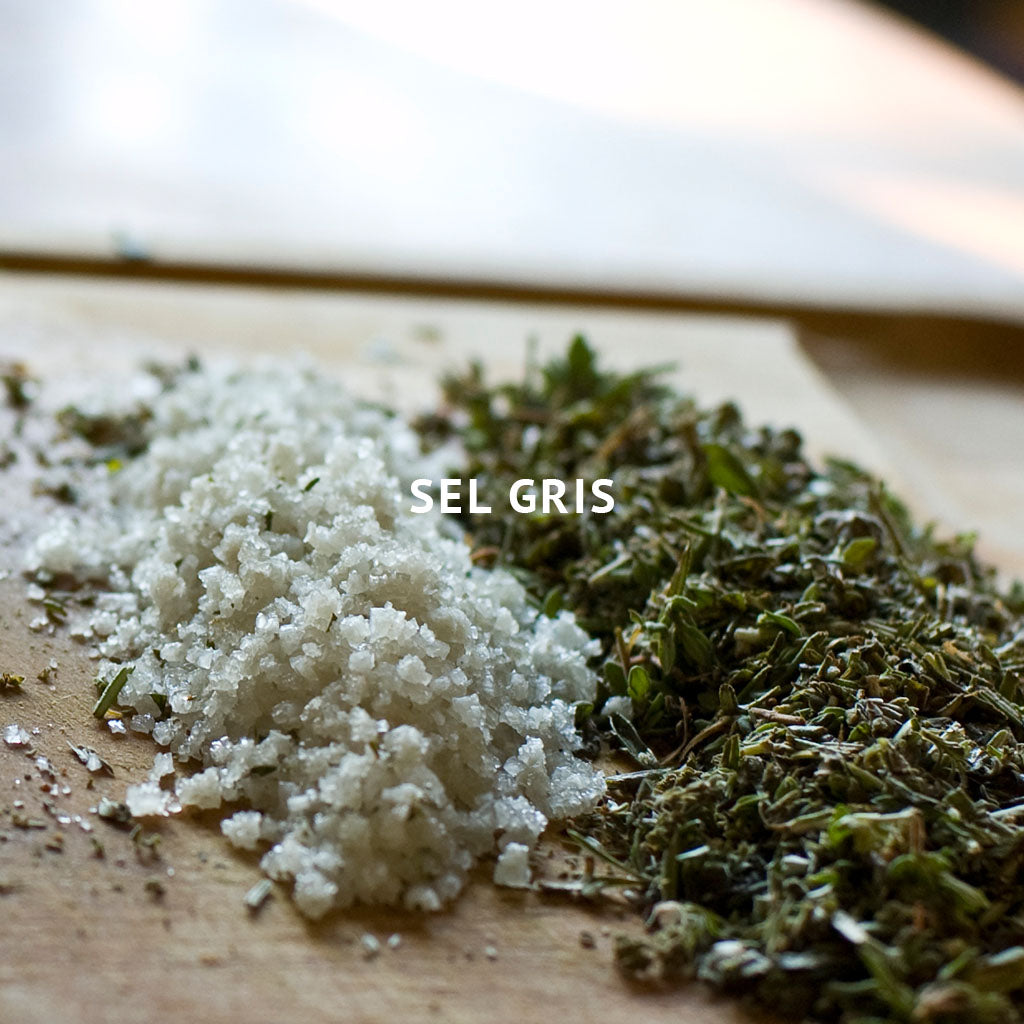
Sel Gris
About: Also known as gray salt, this salt has a hefty, moist crystals with a minerally saltiness and lots of moister. These crystals are made by raking crystals from the bottom of a crystallizing pan soon after they form, which gives them an irregular yet natural crystal structure. Sel gris are also ground into fine traditional sea salt for baking and other uses where a large crystal is not desired.
Impact: Deep, mineral crunch with enough moisture to ensure lasting power on the heartiest and moistest foods.
Uses: Finishing salt for steaks, chops, roasts, beans,roots, or other hearty vegetable dishes. Ideal all-around cooking salt.
Shop sel gris >
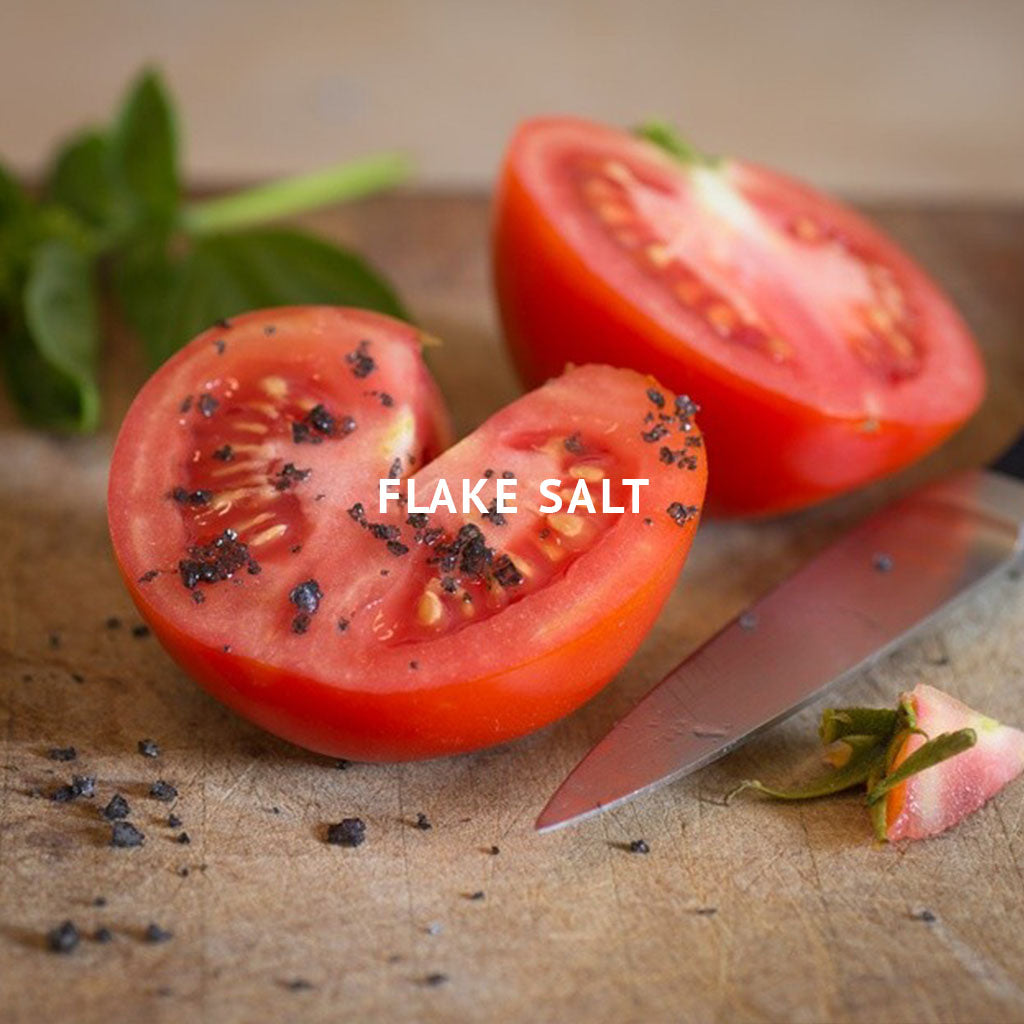
Flake Salt
About: Dry, flaky crystals with a bright, sparkly saltiness. Flake salts appear naturally from solar or fire evaporation with pyramidal, flake, or layered parchment-like crystals. They typically have a lower number of trace minerals than fleur de sel or sel gris. Great for salting salads.
Impact: Crispy snap of intense but fleeting flavor.
Uses: Fresh vegetables; green salads; any dish where the full experience of salt’s most flamboyant texture or sensation is desired.

Infused Salt
About: Sea salt combined with spices, herbs, or other flavors. Flavored is typically best as a finishing salt. Best used to achieve effects that are difficult, expensive, or impossible to do otherwise. Flavors include truffle, chocolate, lemon, vanilla, and saffron.
Impact: This will depend on the base salt type and the flavor. Black Truffle salt has a garlicky, woody flavor. Lemon Flake has a pungent, candy-sweet lemon juice flavor. Saffron Salt is floral and lightly peppery.
Uses: Varies from salt to salt. Try Black Truffle on pasta or egg dishes, Lemon Flake Salt on grilled asparagus, or Blue Lavender Salt on butterscotch pudding.
Shop infused salt >
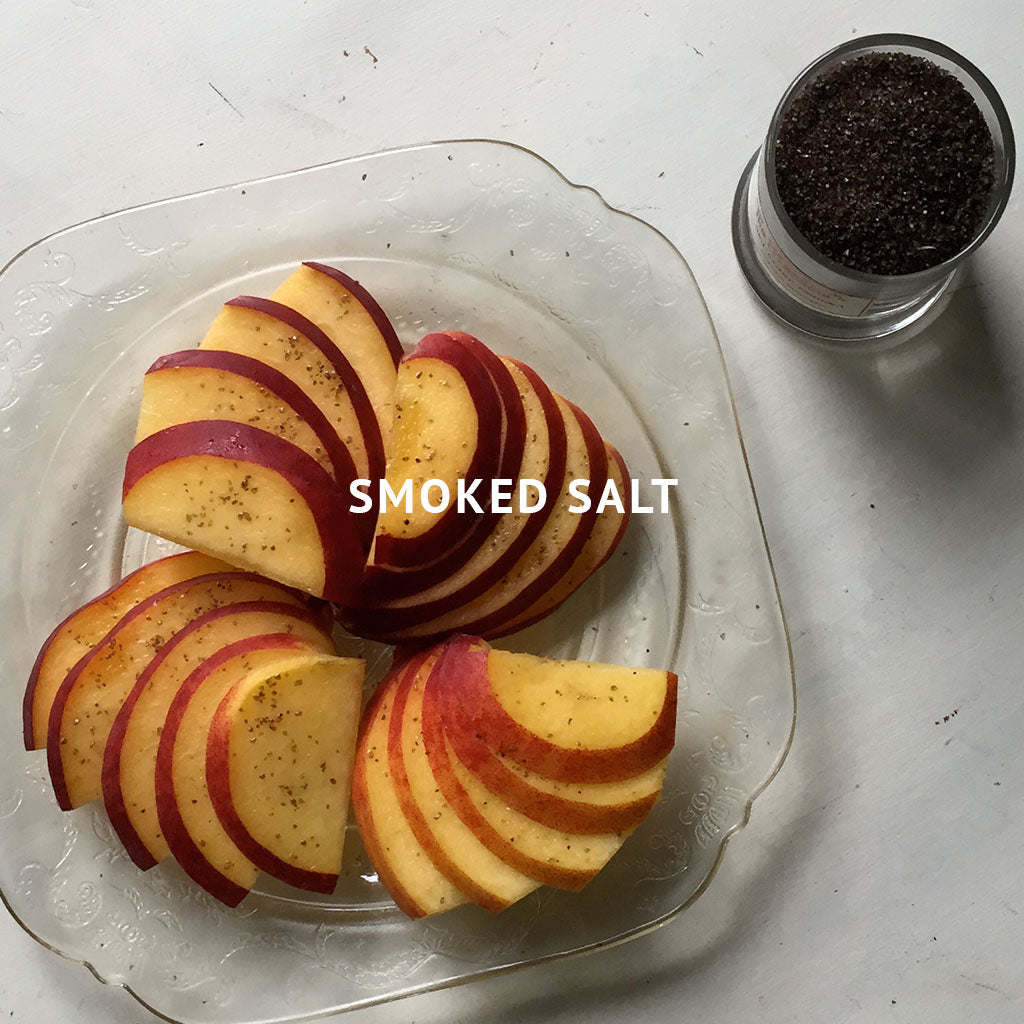
Smoked Salt
About: Sea salt that is cold-smoked with hardwood for a smoky scent and woodsy color. Wonderful as a finishing salt adding smoky-rich aromas and flavors to everything from popcorn to salmon to chocolate mouse. Sometimes used in cooking, such as in brines.
Impact: Depends on the type of wood, the length of the smoke, and the type of salt. Usually dry flakes or grains, they can have flavors that range from warm oak and caramel sweetness to campfire grill char.
Uses: There is a smoked salt out there for almost every type of food. Halen Mon Gold for soups and eggs, Cyprus Hardwood for beef, Kauai Guava for popcorn, or Red Alder on a baked potato.
Shop smoked salt >

Rock Salt
About: Rock salt comes from oceans that drying up tens or hundreds of millions of years ago, leaving us their salt, which has been compressed and transformed while it slept in the earth's crust, waiting to be quarried from the earth. Himalayan Pink Salt is an example of rock salt.
Impact: Hard, dry crystals with moderate to high mineral content and virtually no moisture, usually ground up mechanically for use as a finishing salt. Can have an intense and direct impact in the mouth.
Uses: Great for people who like to use salt grinders as a replacement for refined table salt.
Shop rock salt >
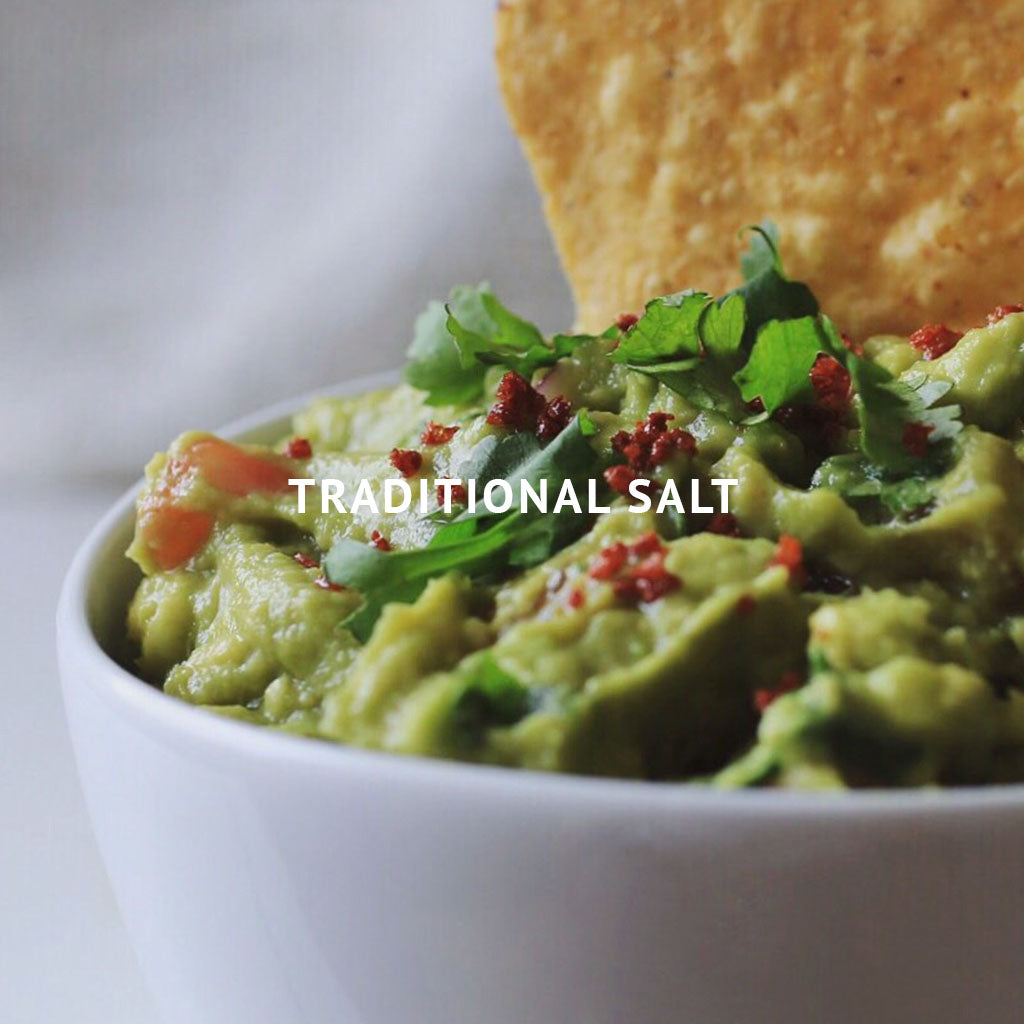
Traditional Salt
About: Catch-all category for solar and fire evaporated salt made by periodically or seasonally harvesting crystals accumulated on the bottom of a crystallizing pan. Coarse, dry sea salts used in grinders are examples of traditional salts. Harvest might employ large plows drawn across a salt pan in Vietnam or spatulas scooping from a kettle in Denmark. Comes in both coarse and fine grinds. Hawaiian salts are an example of traditional salt. They are often infused with baked red alaea clay, which is composed of over 80 minerals, during the harvesting process. These red salts were used historically for ceremonial purposes such as blessing and purifying sea-going canoes, implements, and important household items. Others salts are combined with activated charcoal, bamboo leaf extract, or left in a natural state.
Impact: Varies widely from salt to salt, though often hard and brittle to the tooth and bright and intense on the palate.
Uses: Finishing salt taking advantage of dramatic color and crystal formation and diverse cultural associations. Many traditional salts make good all-around cooking salts, while others are excellent for finishing.
Shop traditional salt >
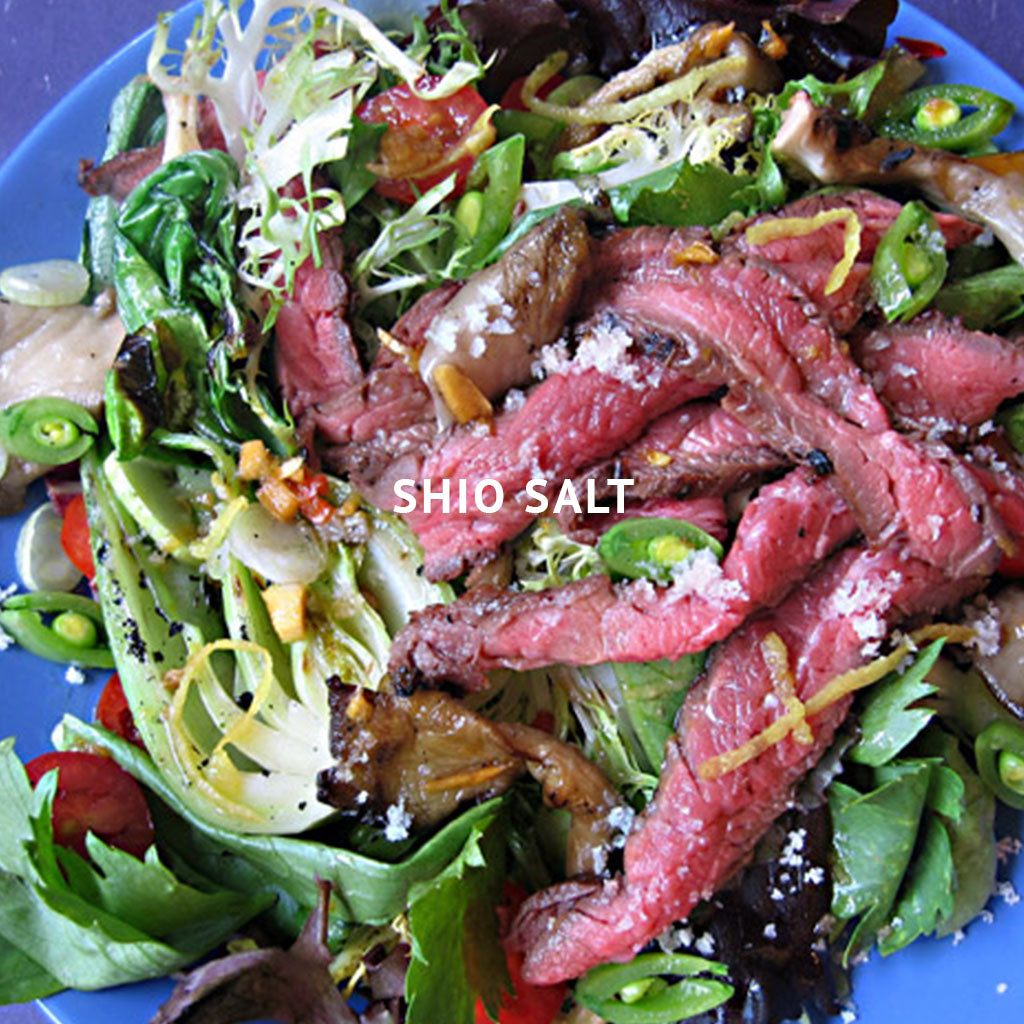
Shio Salt
About: The Japanese have been making salt in this unique style for thousands of years. Seawater evaporated over fire, in a greenhouse, or other ways, then crystallized over fire to form exceptionally fine granular crystals. Aguni and Moshio salts are examples.
Impact: Complex, clean taste that bursts instantly from the crystals.
Uses: The small crystals don’t call attention to themselves, so use with any food where the ingredients should stay front and center but the fullest wealth and complexity of flavor is desired. Sandwiches, broth, sashimi, popcorn and steamed vegetables all love a good shio salt.
Shop shio salt >















